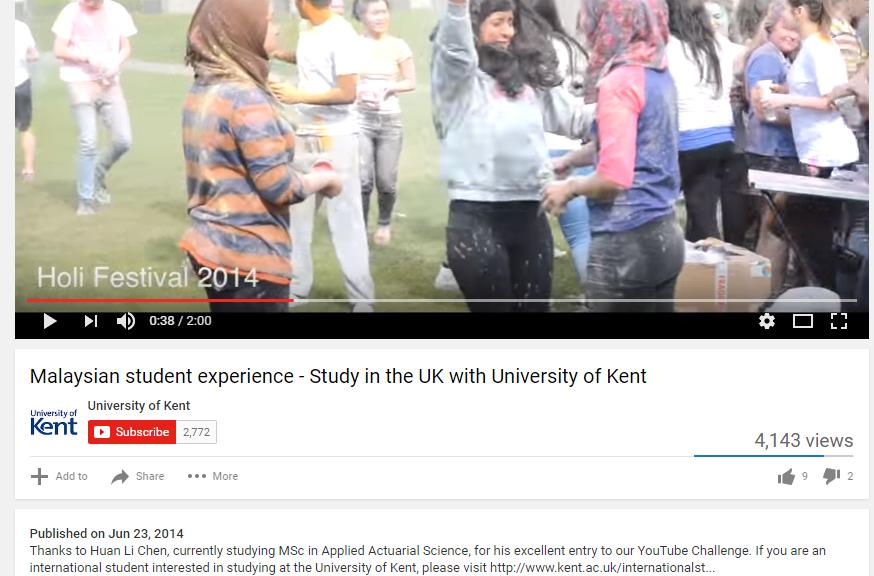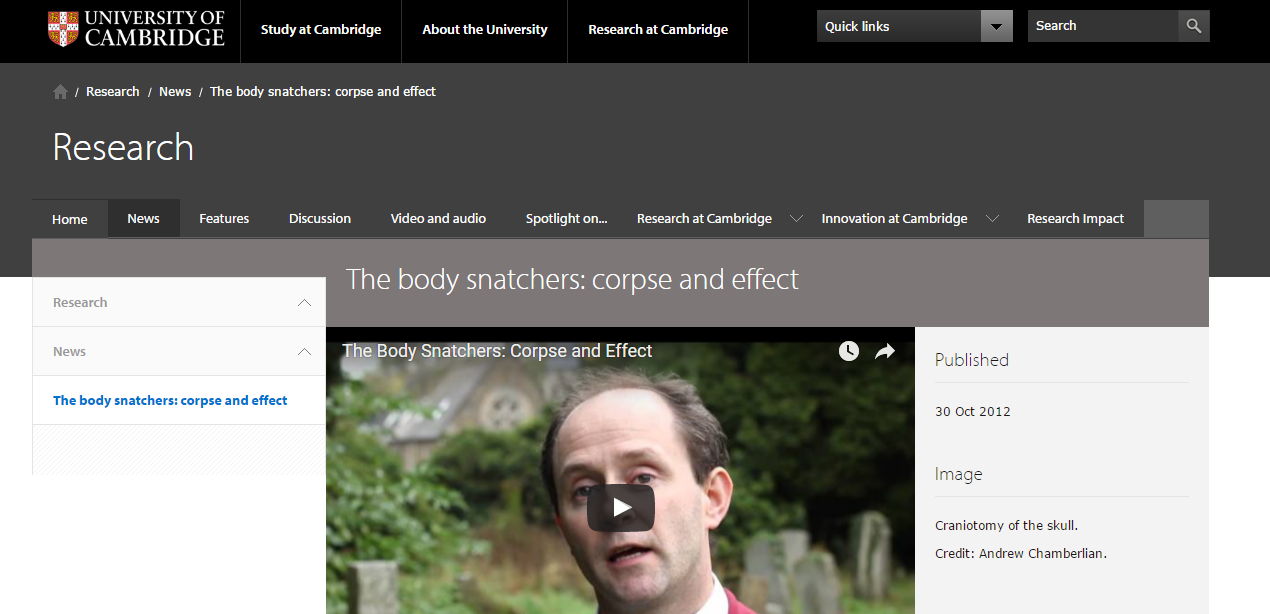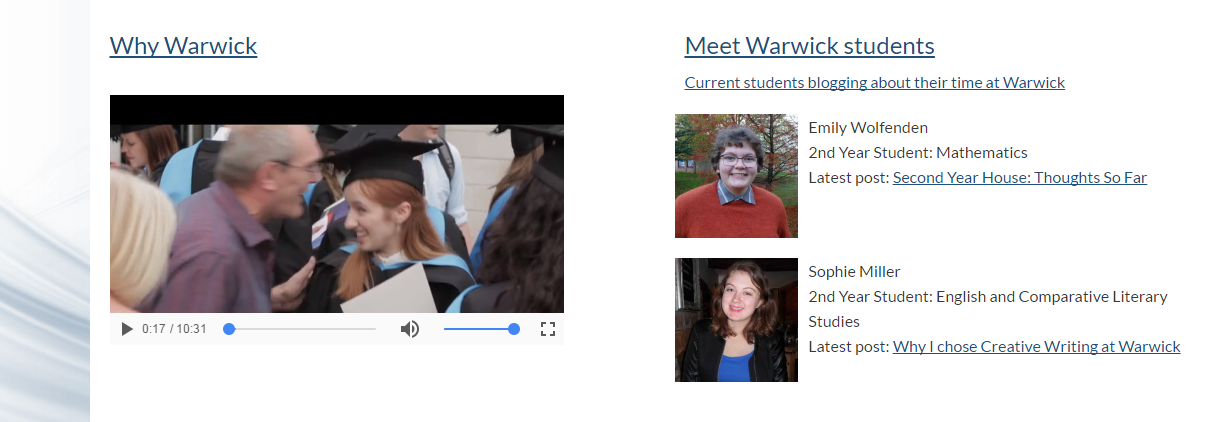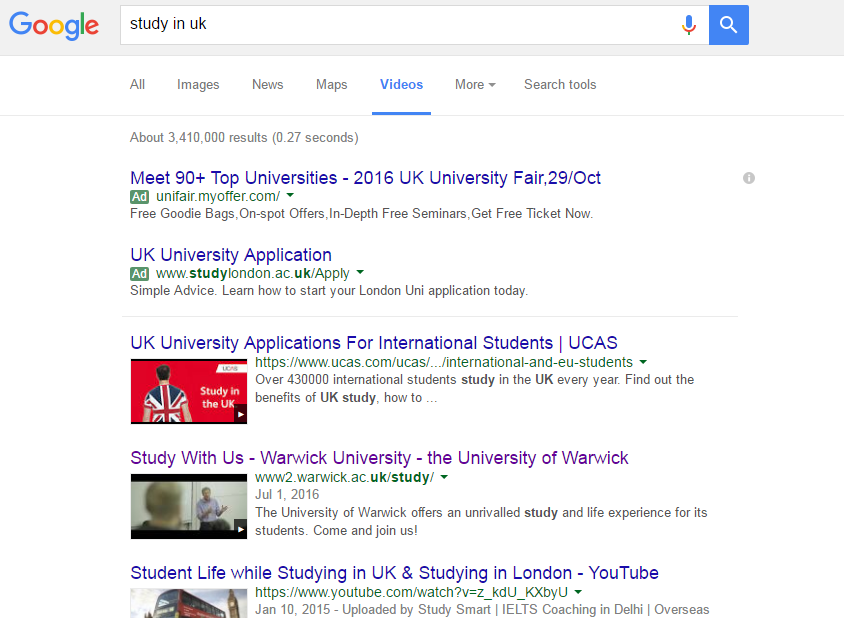
With some estimating that video will account for as much as 74% of all internet traffic by 2017, it’s become increasingly crucial that schools incorporate it into their overall content strategy. Creative, informative, and interesting video has been shown to drive engagement more than anything on the web, with 52% of marketing professionals naming it as the content with the best ROI.
However, one area where video can present challenges is search engine optimisation. While SEO best practices for text-based content- such as incorporating linked keywords into the body text- is relatively common knowledge, optimising for video is less straightforward. Crawlers for search engines such as Google still have no way of reading and understanding video content, and rely instead on a system of metadata that can be difficult to understand.
If you’ve been struggling to boost the visibility of your school’s video clips in search rankings, read on for some useful tips to optimise your video content more effectively and drive more traffic to your site.
1. Give Your School’s Video Content an Instant Boost by Adding Essential Metadata
The most important ranking factors for video in search results are the title, description, and thumbnail. Titles for videos and their respective pages should be short and concise, but give a clear indication of the content, while the description can contain more details and relevant keywords where possible.
Example: The title and description of this clip from the University of Kent, which is a video diary submitted by a Malaysian international student, incorporates a number of strategic keywords, as well as a link to the university website, increasing its chances of ranking highly in results.

The video filename can also be important, so make sure it describes your content accurately, rather than using a generic or automatically generated name. The thumbnail you select for your video, while not a ranking factor in itself, does influence a user’s click-through rate and views, and selecting a striking or engaging image will help improve your education lead generation efforts.
On a more advanced level, many professionals now opt to create schema tags for their videos. Schema is a ‘shared markup vocabulary’ developed by schema.org and endorsed by top search engines including Google, Bing, Yahoo, and Yandex, with the aim of standardising some elements of SEO. Among them was the development of VideoObject tags, which are invisible on your page, but can be added to your html code, helping search engines to index your video content more accurately. Schools can attach schema tags that include everything from locations and people involved in their videos to descriptions of the content, and even full transcripts of the text.
2. Create Unique Web Pages for Your Videos to Attract Prospective Students to Your Website
Ideally, you should create a unique page for each video on your website. This gives you a unique URL to share on social media, and through onsite links and email marketing campaigns. It can also make it easier to create a video site map and allow Google to index the URL as a video page. A video site map is essentially a list of all of your video URLs. When submitted to search engines like Google, they will crawl each page confirming that video content is present and will then index them accordingly. Google offer a simple tutorial on how to make one for webmasters here.
Example: The University of Cambridge’s videos are all given their own unique URLs, making them more readable for search engines and allowing the school to maximise their potential SEO benefits.

Some experts also advise hosting your videos to your own domain, rather than on popular video platforms like YouTube and Vimeo. The reason for this is that search engines are likely to crawl and index the version on the host site first, rather than your own webpage.
Example– This video ad from The University of Warwick’s website shows up in second in the SERPs for the extremely desirable search term ‘study in UK.’ Since the video is hosted to the university’s own domain rather than YouTube, the search result takes users directly to their website, improving its ranking while also making it more likely prospective students will view other content.


However, while a high ranking video like this can provide you with a much needed SEO boost, it’s worth noting that there is some risk in this strategy. YouTube is still prioritised by both users and search engines when seeking video online, and choosing to host your own clips could limit their potential reach. YouTube videos are also easier for users to share on other social media platforms. One compromise might be to create separate videos for both, allowing both your site and your YouTube channel to enjoy some SEO benefits from your content.
3. Optimising for YouTube is Essential to Generate More Student Inquiries From Video Content
Even if you do opt to host videos to your own domain, having some presence on YouTube is crucial for attracting new leads. The video sharing website is one of the most universally popular on the web, with over 1.3 billion users, which is just over a third of the total number of internet users worldwide.
YouTube is also by far the most advanced and efficient video search engine there is. While the company is owned by Google, it has its own search algorithm and indexing criteria which it uses to categorise and rank videos on its site.
While the video title, description and thumbnail are all still important on YouTube, schools also need to keep in mind a number of different ranking factors. One of the most effective ways to improve your SEO on YouTube is to add tags to your videos. These function in the same way as keywords, and can be a good way of improving your visibility in strategic searches.
In addition, even though most schools would probably prefer prospective students to view their content on their own website, having users engage with you on YouTube itself can be important to ensuring your visibility. Likes and dislikes, comments, bookmarks, and flags or reports all tell YouTube’s crawlers how well your content is being received and affect your ranking.
Example: This campus tour of Stanford University has been viewed almost 600,000 times on YouTube. That’s more than 16 times the student population of the school! That kind of reach is only possible on a universally popular platform like YouTube, further underlining why it’s such an essential platform for recruitment. As you can see, Stanford’s account has a large number of subscribers, while this video has attracted a high amount of likes, showing the importance of user engagement in helping clips spread on the site.

Although the total amount of views your videos receive will also have an effect on your visibility, view density is possibly a more important factor. YouTube’s algorithm prioritises videos that have received a large amount of views in a short space of time, as it can indicate that the post is topical and relevant. The amount of time users spend viewing a video is also taken into account, much like the bounce rate on ordinary webpages. Schools wishing to improve their performance in these areas can do so by focusing on newsworthy, informative content.
Promoting your videos through social media and your own website will also send strong authority signals to Google, as well as any backlinks and embeds you can gain by engaging your audience through other channels. In addition, your YouTube channel’s overall views and number of subscribers can also play a part in how well any new content you add ranks, as YouTube will take these indicators as a sign of authority.
One thing that can make SEO for schools on YouTube easier is that statistics on many videos are publicly available, allowing you to gain insight into the performance of top-rated videos. YouTube also offers a full suite of analytics tools to account holders, allowing you to measure and improve your performance over time.
Example: This video from Rice University in Texas documenting their 2016 move-in day has performed extremely well on YouTube since its release in August, with 5,758 views. They have made their video statistics graph publicly viewable, and it may offer some insight into the video’s success. For instance, you can see it gained its highest amount of views during its first day of release, suggesting it was probably promoted heavily by the school through their website and social media channels.


4. Add Interactive Elements to Your Videos to Maximise Education Lead Generation
If you’re looking to maximise SEO value and generate as many potential leads as possible from your video content, you should really consider overlaying your video content with interactive links. YouTube offers a range of interactive options for video users known as YouTube Cards. A video can contain up to 5 cards, which can include text, images, and links. Cards can be used to link to your other video content and encourage prospective students to subscribe to your channel, and can also be linked back to your website.
Example: Bishop’s University in Canada use cards as CTAs in their recruitment videos to direct students to their website.

YouTube allows a maximum of five cards per video, which should generally be spaced out throughout your clip in order not to overload prospective students with links and detract from their viewing experience. Call to Action overlays can also be created for your videos using AdWords and YouTube TrueView, and you can also present them in your video ads as auto end screens, which automatically appear at the end of the clip.
5. Transcripts and Closed Captions Can Drastically Improve Video SEO for Schools
Adding closed captions to your video content can be a wise move for schools, making it more viewable for people with hearing difficulties, or who simply don’t have access to audio when they come across your clips. But did you know that closed captioning can also help your SEO?
A 2013 study conducted by Discovery Digital Networks revealed that captioning was being indexed by Google’s crawlers, and also showed that captioned videos were viewed around 7.23% more than uncaptioned clips. Captioning your school’s video can be a useful way of elevating your ranking for strategic keywords.
Example: This promotional video from the University of Chicago uses closed captions. As you can see from the snippet below, it mentions information about areas like scholarships and financial aid. By closed captioning the video, the school ensures that it has a better chance of ranking for searches in those areas.

You might also consider making transcripts of your videos available. Transcripts allow you to present your video content in text form as well, providing an extra SEO boost for your content. While some websites present them on the same page as videos, they should ideally be placed on a separate link, as having too much text can divert attention from the video content and also lead to search engines classifying the URL as a text page rather than indexing it in video results. Creating additional pages for your transcript also has the added benefit of increasing the amount of links between the pages on your site, improving your off-page SEO.
Example: The University of Nebraska-Lincoln keeps transcripts for its videos on separate pages from the video content itself, making it more indexable for search engines.

Search engines are constantly striving to improve their indexing process for video, and working on new techniques to make video pages easier for crawlers to understand. As a result, it’s important that recruiters keep up to date with the latest developments in the area, and regularly assess the performance of their video content to see what can be improved. For now, however, all of these tactics can drastically improve video SEO strategy for schools, helping you engage and connect with students more effectively than ever before.
What techniques have you found to be most effective in optimising your video content? Join the conversation in the comments section below!






